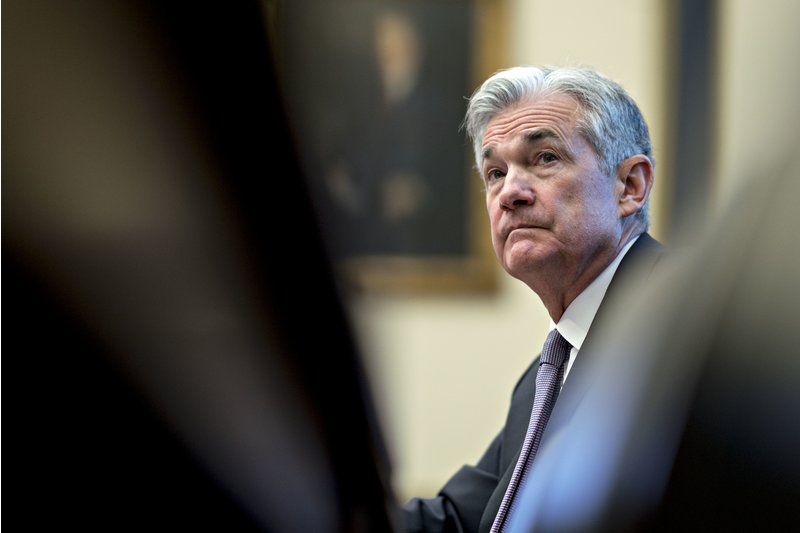


|
四月下旬,10年期国债利率四年来第一次升至3%,该利率是从抵押贷款到美国联邦学生贷款的基准,走高部分原因是担心通胀和预期今年美联储加息。可能只是个数字,但也是人人都十分关注的数字。如果继续维持或进一步提升,可能推高抵押贷款利率和商业贷款利率。由此可能导致消费缩减,股市走低,投资者习惯了多年超低利率后或将被迫调整投资组合。
眼前就有例子:由于基准利率升至3%,企业收入疲软,周二收盘时道琼斯工业平均指数跌去400点,收于24024点。连续数日走低后股指较1月高点已下跌7.5%。
“这显然是一段时间以来没见过的心理水平,” 安联投资管理公司高级投资策略师查理·瑞普利表示。“2014年以后就没达到过3%,但当时也只是短暂触及,很快便回落至低谷。”
数字“3”具有重要的心理意义还有其他证据,著名投资者也指出3%的利率水平是转折点。“债券天王”杰夫·冈德拉奇就警告称,虽然目前10年期国债没高过3%,一旦超过,2018年底股市会进一步走低。古根海姆公司首席投资官斯科特·迈纳德也警告称,如果利率超过3%,债市就会跌入熊市。
不过,债券利率升至3%并非没有先兆。美联储今年年初就已指出利率将走高,金佰利和惠而浦等公司周二早些时候也发出警告。亚德尼研究公司的埃德·亚德尼写道,投资者理应为利率走高有所准备。
所以10年期国债利率达到3%对股市的影响会不会持续很久,还有待观察。
“股市上可能有些短期反应,”PNC金融服务集团联席首席战略官杰夫·米尔斯表示。“利率走高打击股市方面并没有固定规律。也许股市没问题。”
米尔斯表示,利率上升引发最大的担心是,美联储加息会不会太快,将国债利率推高至3%以上。
“如果利率上涨过快过高,确实有可能出现(股市下跌),从而拖累经济发展,”米尔斯表示。
有些投资者还担心,长期债券与短期债券息差缩窄。通常两年期债券收益超过10年期国债时,说明经济进入衰退。周二10年期国债利率约3%,现在两年期债券约2.47%,相差约0.5个百分点。但今年初息差要大一些,约为0.6个百分点。
不过地平线投资公司的格雷格·瓦里耶表示,衰退的可能性不大。
“我们认为,随着美联储逐渐收紧,要导致经济发展失衡或股市走低,利率还要上升很多。近期出现衰退的几率很低,尤其是现在失业率不到4%的情况下,”周二他在一份报告中写道。(BT365的网址是多少) 译者:Charlie 审稿:夏林
|
The 10-year Treasury yield, a benchmark used to price everything from mortgages to federal student loans, rose to 3% for the first time in four years on Tuesday in part due to fears of rising inflation and expectations of more Fed interest rate hikes this year.
It may be just a number—but it’s a number that is heavily watched. If sustained or pushed higher, it could lead to higher mortgage and business loan interest rates. It could also lead to reduced spending—pushing stocks lower, and forcing investors to rejigger their portfolios after years of ultra-low rates.
Case and point: Partly due to the yields reaching 3% and weaker corporate earnings on Tuesday, the Dow Industrial Average shed 400 points to 24,024 by the market’s close. That drop puts the market 7.5% lower than its peak in January following several days of declines.
“It’s definitely a psychological level we haven’t seen in a while,” says Charlie Ripley, senior investment strategist at Allianz Investment Management. “We haven’t seen 3% since 2014—and even then it was just briefly before we slid into all time lows.”
Adding to the number “3”‘s psychological importance: Famed investors have also pointed to a 3% rate as a turning point. “Bond King” Jeff Gundlach has warned that should the 10-year yield surpass 3%—which it has yet to do—stocks could close lower at the end of 2018. Guggenheim Partners chief investment officer Scott Minerd, meanwhile, warns that rate in excess of 3% signals a bear in the bond market.
Still, bond yields reaching 3% aren’t exactly coming out of nowhere. The Federal Reserve has pointed to raising inflation since the start of the year, while companies including Kimberly-Clark and Whirlpool warned earlier Tuesday of the same trend. It’s hard to think that investors haven’t, to some extent, prepared for higher yields, wrote Ed Yardeni of Yardeni Research.
So it remains to be seen if the effects of the 10-year note reaching 3% on the stock market will be long lasting.
“I think you may see some short term reactions in equity markets,” said PNC Financial Services Group co-chief investment strategist Jeff Mills. “There’s no hard and fast rule that rising rates have to be hard for stocks. The stock market may be just fine.”
The real worry underlying these rising yields, says Mills, is a fear about whether the Fed will raise rates too quickly—helping push treasuries further above 3%.
“There’s definitely potential for a sustained [drop in stocks] if rates run too far too fast, and the Fed tightens too quickly—that could slow down the economy,” Mills said.
What’s also causing some investors worry: A closing spread between the yield of long-term and short-term notes. When the yield on the two-year note exceeds that of the 10-year, it often signals a recession. While the 10-year yield is at about 3% Tuesday, the yield on the two-year note is now at about 2.47%—a difference of roughly 0.5 percentage points. But at the start of the year, that difference was further apart, about 0.6 percentage points.
However, a recession doesn’t look likely, says Greg Valliere of Horizon Investments.
“As the Fed gradually tightens, it will take rates significantly higher than current levels to derail economic growth or the stock market, in our opinion. A recession isn’t remotely imminent, not with the unemployment rate headed below 4%,” he wrote in a note Tuesday.
|
最新文章




